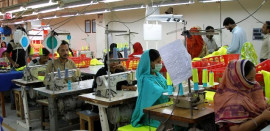
The Amazon fulfillment centres, as they call them, are different in the sense that there are no humans moving shelves and aisles using forklift from one corner to the other. Instead, there are hundreds of robots doing all the heavy lifting and moving non-stop on the floor, running the show without any human intervention, coffee break, maternity or sick leave.
In all the previous three industrial revolutions, we humans actually developed the technology and built machines to be faster and smarter. Now, we have reached a point where technology is no more the main stumbling block, but we humans are identified as a major bottleneck in bringing the next industrial revolution.
Auto industry seeks incentives in new policy
Whether to operate a complex plant or machinery, or process a large amount of data at lightning speed, or drive accident-free on the road, we are laying the foundation of the 4th Industrial Revolution (4IR) by minimising or eliminating human involvement.
While developed countries are preparing their workforce to deal with effects of the 4IR, the governments in developing nations seem to be in no hurry to adapt to the change thanks to the abundance of cheap workforce. Though developing nations like Pakistan, India and Bangladesh will be more vulnerable to the 4IR than their developed counterparts, the main focus for them is to still prepare their workforce to reap benefits of the status quo.
Giant Chinese companies shaping the world’s industries
The biggest challenge for any government in Pakistan, or in any other third world country for that matter, has always been to manage the uncontrolled population growth with ever depleting resources. The recent monetary tightening, slowdown in the economy and revenue shortfall will further shrink the fiscal space available for the government to spend on human capital development.
For a very long time we have been thriving on the remittances sent by the unskilled or semi-skilled workers from abroad and reaping the benefit of an unprecedented construction boom in many cities in the Middle East eg Dubai. An estimated $4 billion was remitted back home in 2018 alone by the mostly blue collar Pakistani diaspora in the UAE.
However, those countries in the Middle East now need more highly skilled white collar workforce in the field of finance, trade, hospitality, cutting edge technologies and other related services sectors. Even the need for unskilled workers in the construction industry is reduced thanks to the use of prefabricated building blocks and mechanised construction processes.
It was not Elon Musk but the Dubai road transport authority that successfully tested driverless “autonomous pods” in January 2019 to replace taxis for travelling short distances. Also, the rapid development in mass transit infrastructure such as metros and the railroad network in the Middle East will revolutionise the space once dominated by the taxi and truck drivers hailing from third world countries like Pakistan and India.
While there is nothing wrong for the government to focus on short to medium-term measures to stimulate part of the economy that creates lots of menial jobs such as in the construction industry, it is also imperative to create a long-term plan to prepare future generation to meet the challenges of changing technological landscape.
The process involves futuristic planning to know in advance about what kind of skill sets are required for the workforce to stay competitive and relevant locally and abroad and start preparing them from today.
Government and private education sector as well as skill development centres can collaborate to develop the curriculum by putting more emphasis on emerging technologies such as robotics, machine learning, data analytics, artificial intelligence, nano and bio-technology.
The 4IR is not going to be here tomorrow or next year, but a smooth transition plan is surely needed to maintain a sustainable remittance flow to maintain healthy foreign exchange reserves. The long-term human development plan will also ensure that there is no crisis due to fall in employment opportunities and rise in social inequalities.
The writer is a financial market enthusiast and attached to Pakistan stock, commodity and debt markets
Published in The Express Tribune, February 18th, 2019.
Like Business on Facebook, follow @TribuneBiz on Twitter to stay informed and join in the conversation.

































1714024018-0/ModiLara-(1)1714024018-0-270x192.webp)









COMMENTS
Comments are moderated and generally will be posted if they are on-topic and not abusive.
For more information, please see our Comments FAQ